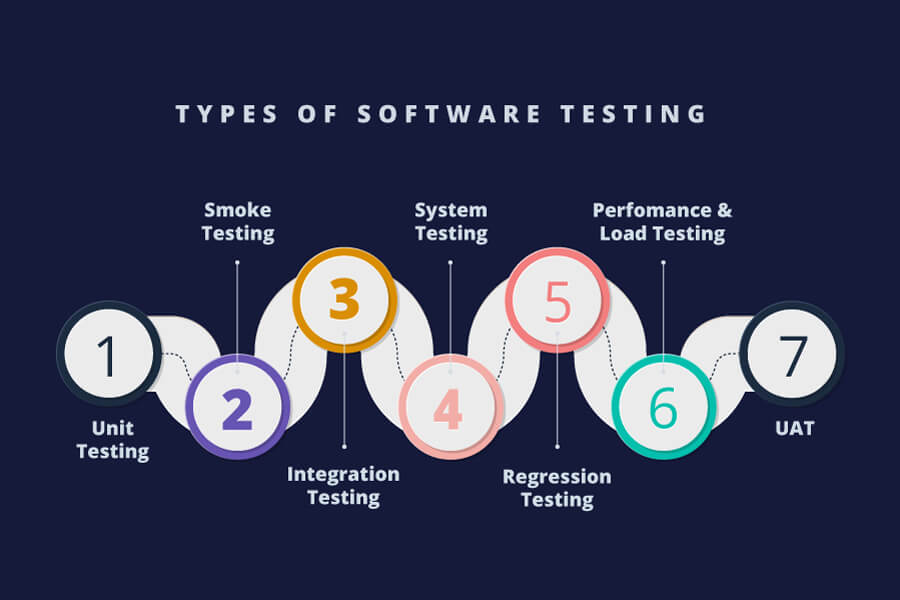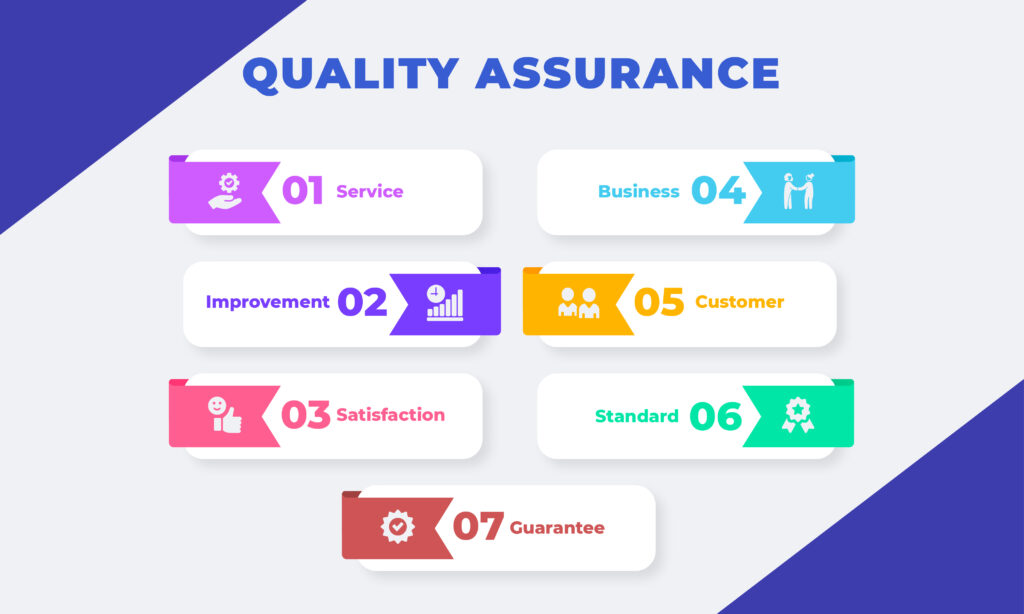Testing types – Everything that you need to know about testing
appstonelab
May 24, 2022

Introduction:-
Testing is the procedure of accomplishing a program with the motive of detecting errors. To make our software execute well, it should be bug-free. If testing is done effectively, it will eradicate all the errors from the software.
Standards of Testing:-
All the tests should meet the customer requirements. Below are a few of the standards that I personally follow:
- To make our software, the testing should be undertaken by a third party
- Exhaustive testing is not possible. As we need the desirable amount of testing based on the risk evaluation of the application.
- All the test that needs to be performed, should be planned before implementing it
- It follows the Pareto rule(80/20 rule) which states that 80% of bugs come from 20% of program parts.
- Start testing with tiny parts and widen it to large parts.

Types of testing:
You can check out the types of testing below:
1. Unit Testing:
Unit Testing is a kind of software testing where independent units or elements of a software are tested. The core motive is to authenticate that each unit of the software code performs as expected. Unit Tests separates a section of code and confirms its exactness. A unit may be a discrete function, technique, procedure, module, or an object.
2. Integration Testing:
The target is to take unit tested parts and construct a program structure that has been directed by design. Integration testing is testing in which a variety of components is incorporated to yield output.
3. Regression Testing:
Regression Testing is a type of testing that is performed to demonstrate that a code shift in the software does not influence the current feature of the product. This is to establish that the product works well with new functionality, error fixes or any changes to the current feature. Formerly accomplished test cases are re-executed in order to verify the consequence of the change.
4. Smoke Testing:
Examines the application stability to see if the application is install-able, if the application is performing properly & if the home page of the application is displaying. So basically, it is used for verifying crucial synopsis of the application.
One such example is Concrete health check up: General/concrete health checkup means monitoring of sensitive areas in body like fasting blood sugar, liver function test, lipid profile. In smoke testing, it basically aims at sign up, login and home page functionalities.
5. Sanity Testing:
We can say that sanity testing is taking place to ensure that all the glitches have been resolved and no additional issues exist. Unit Testing is done during the breakthrough (coding phase) of an application by the developers due to these changes.
Sanity testing also ensures that the change in the code or features does not affect the related modules. Accordingly, it can be applied only on connected modules that can be affected.
You would understand it better if I use an example of specialized health check up: The specialized health checkup means heart surgery or kidney operation. So it mainly focuses on a particular part of the body which is the same as sanity testing as mentioned earlier because it focuses on a particular component.

6. Alpha Testing:
It is one kind of user compliance testing. It’s motive is to detect all the feasible problems and errors that a product can create and resolve all those issues before the final product is delivered to the end user or to the public. This testing got its name as alpha as it is performed at an ancient stage, close to the completion of software development life cycle but before beta testing. This is usually carried out by the QA team.
7. Beta Testing:
Beta Testing is also one kind of user regulation testing that is done by the specific team of actual users of the application. As it is the ultimate phase of testing, it is done in construction or real surroundings. To attain this type of testing the software is delivered to few external members or customers who are not from the organization, they share their feedback on product’s design, features and overall quality.
Few examples that I can think of are Whatsapp & Instagram Beta testing program.
8. System Testing:
This software is tested such that it works well for the various operating systems. It is shielded under the black box testing methodology. In this, we just target the imperative input and output without focusing on internal function.
9. Stress Testing:
A stress test is a kind of interpretation test that examines the upper limits of your system by testing it under utmost loads. Stress tests examine how the system behaves under intense loads and how it recovers when going back to normal usage.Stress tests also look for memory leaks, slowdowns, security issues, and data corruption.
10. Performance Testing:
Performance testing is the universal name for tests that detect how the system acts and performs. This testing inspects accessibility, sturdiness, robustness, credibility, speed and resource usage of your software and construction.
Prior to this testing, it’s crucial to find out your system’s business motive, so you can tell if your system acts satisfactorily or not as per your client’s needs.
11. Security Testing:
“Security means that approved access is permitted to protected information and unauthorized access is confined”.
So, it has two major aspects – first is the protection of data and the second one is access to that data. Additionally, whether the application is desktop or web-based, privacy turns around the two foregoing concepts.
- A desktop application should be private not only related to its access but also with respect to the association and storage of its data.
- Likewise, web applications drive, even more, security with respect to its access, along with data protection. A web developer should make the application exempt to SQL Injections, Brute Force Attacks and cross-site scripting. Correspondingly, if the web application advances remote access points then these must be secure too.
Security Testing Techniques:
- Access to Application
- Data Protection
- Brute-Force Attack
- SQL Injection
- Service key Points (Covered and Secure Open)
- Session Management
- Error handling
- Specific Risky Functionalities
Conclusion:
So, the importance of software testing and quality assurance is of high value in a software development lifecycle. Both of the processes ensure superior quality to the product. Also, it reduces maintenance costs and provides better usability and enhanced functionality. At AppStone lab, the primary goal is to force the system to fail so that the defects that caused the failure can be uncovered and then fixed by root cause analysis.
Related Blogs
App DevelopmentSaaS
appstonelab
May 24, 2022

SaaSWeb Development
appstonelab
May 24, 2022

App Development
appstonelab
May 24, 2022
